About this blog: Wular Lake is one of the largest freshwater lakes in Asia. But the lake has now shrunk in area considerable due to human activities, plantation and pollution. In this blog, we have shared our visit to Wular Lake, the importance of the lake in the water ecology of Kashmir and the problems it is facing. Read on to know more.
“Wular Lake in Kashmir is the largest freshwater lake in India”. – I had read this a long time back in some school text book when we used to brush up our general knowledge in order to show our prowess in quiz competitions. Somehow, I found the name “Wular” quite striking and my young mind already decided to visit this lake. Somehow, that little fact remained dormant in my mind as I grew up until I visited Kashmir for the first time.
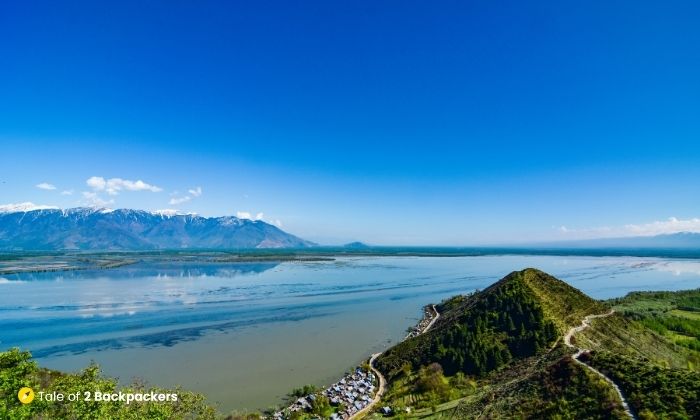
Unfortunately, Wular eluded me in our first time visit to Kashmir, as we just completed Amarnath Yatra and then proceeded to visit Ladakh. But for the second time in Kashmir, I was totally determined to visit this beautiful lake in Kashmir. I felt a strange sort of excitement to visit a place that I had read about and wished to visit a long time ago. Do you have this kind of feeling? Or am I the only crazy one!
After spending a few days in Srinagar and exploring Aru Valley, Gulmarg and the lesser known places like Yusmarg and Doodhpathri, we were finally going to visit Wular Lake. We would also visit Manasbal Lake on our way.
Where is Wular Lake?
Wular Lake is located in Bandipora district of Jammu and Kashmir, about 50 km northwest from Srinagar city. The lake is situated at an altitude of 1580 m surrounded by beautiful mountain peaks. Wular Lake is quite beautiful and many writers have praised its beauty in their books.
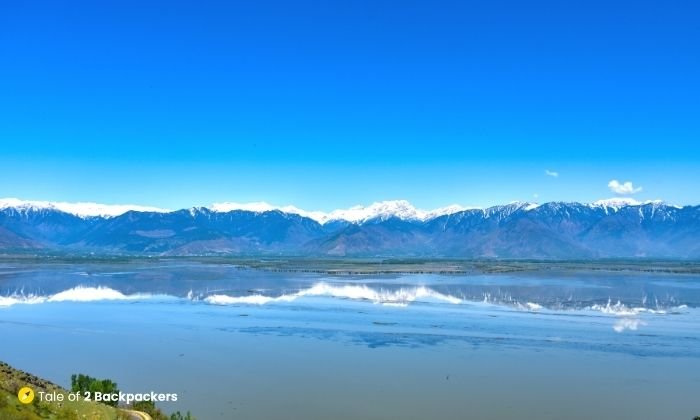
The lake controls the flow of the Jhelum River, which traverses it. The town of Sopore is on the southwest shore of the lake, and an island to the northeast contains 15th-century ruins.
Wular Lake
The size of Wular Lake is 16 km long and 10 km wide, but it varies according to season and the varying water levels. The maximum depth of the lake is 14 metres.
History of Wular Lake
It is believed that Kashmir was once entirely covered by water bodies known as Satisaras (after Sati, the consort of Lord Shiva). The mythological Rishi Kashyap (also known as Kashapa) drained the water from the area by opening a gap in the hills near a place called Varahamula. Infact, the etymology of Kashmir is traced back to rishi Kashyap, the manasputra of Lord Brahma.
The lake once gave rise to high waves and thus got its name “Ullola” meaning rising waves in Sanskrit. Over centuries, the name came down to Wular or Wullar.
But Wular Lake is not the largest freshwater lake in India.
The lake is huge, but definitely not the largest freshwater lake in Asia, as you will find mention in many books as well as on the internet.
Wular Lake, once upon a time had covered an area of 217 sq kilometers (84 sq miles) including 58 sq km of marshland. This was found in a study prepared by the Wetlands International, South Asia, done in 2007 on the lake.

The area of the lake was reduced from 217 sq km in 1911 to 86 sq km in 2007. Most of the area has been lost to agriculture, plantations and habitation. And this has led to a number of problems.
Importance of Wular Lake in the ecology of Kashmir
Wular Lake plays an important part in the hydrographic system of Kashmir Valley. The lake basin was formed due to a tectonic activity and is the source of water for River Jhelum, the most important river of Kashmir Valley. The lake also forms a huge absorption basin for annual floodwater. A number of local water bodies like Bohnar, Erin, Madamati and Ningal also drain their waters in the lake.
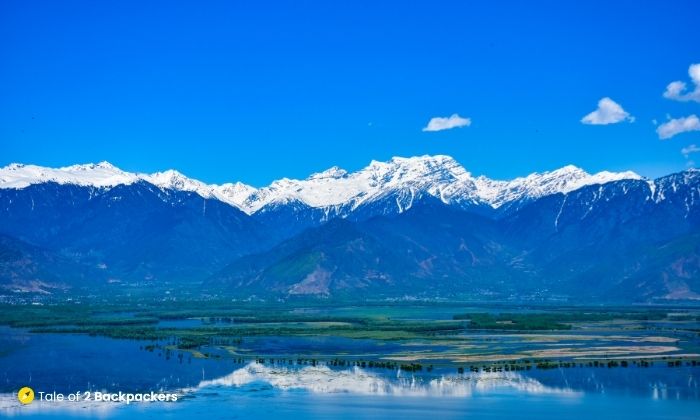
Wular Lake and its associated wetlands are important habitats for migratory birds as well. Migratory birds like Egret, Shoveler, Common Pochard and Mallard can be spotted here. You can also find marbled Teal, Monal Pheasant, Himalayan Pied Woodpecker, Himalayan Golden Eagle, Alpine swift and many other species of birds around the Wular Lake.
Wular Lake is also a treasure trove for water chestnuts.

However, increasing encroachment and water pollution have already posed serious dangers to these birds and their numbers have reduced significantly.
Wular Lake is also an important fish habitat and fishes from the lake make up a major part of the diet of the people in Kashmir Valley.
Our Visit to Wular Lake
We started from Srinagar quite early for our visit to Wular Lake. I was pretty excited. We first visited Manasbal Lake on our way. Unfortunately, the Manasbal Eco Park was closed that day and we could not go for a shikara ride. So we carried on our drive towards Wular Lake.

We drove through the roads of Sopore and saw the blooming apple blossoms. I had previously seen red apples on trees during our trip in Himachal Pradesh, but it was the first time I saw the beautiful blossoms. Nature surely has great ways to surprise us.
We reached Bandipora and continued on the road till we got the first glimpse of the Majestic Wular. I could not just wait and asked our friend Aarif, who accompanied us to stop the car so that I could get down and have a look.

Though he stopped the car, he kept telling me that he would take us to a better viewpoint. We kept on the road, which was a bit rough and finally reached Wular Park. Unfortunately, this park was also closed. Basically, the Wular park is a small park built by the J & K Tourism Department from where you get a vantage view of the Wular Lake. To say I was disappointed would be an understatement. First it was the Manasbal Ecopark and now it was this one. I was just grumbling when Aarif just smiled and told me he would take me to a viewpoint much better than this. It is always good to have a local friend, isn’t it?
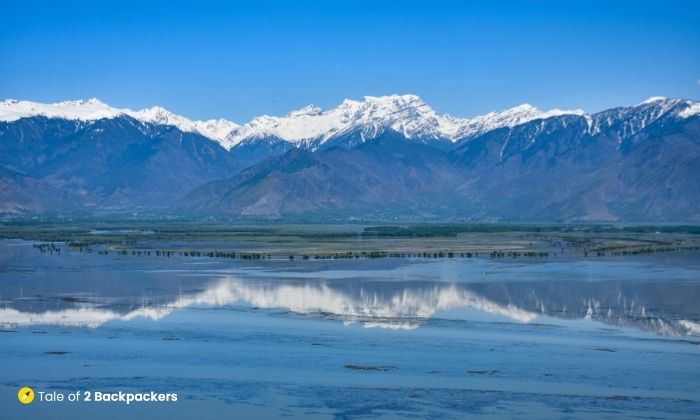
So we started again in our car and Aarif basically took us around the periphery of the entire lake. On the way, we saw the different villages and also the encroachments on the lake. It was actually sad to see the human activity reducing the size of the lake and harming it. It seems human beings do not understand the importance of our ecology until it is too late.

Finally, Aarif brought us through a winding road and stopped the car at a cliff end. This place was near Watlab in Sopore. Well, he kept his promise. The view was definitely stunning. We saw the blue waters of the Wular Lake in front and the reflection of the Mt. Harmukh in the clear waters. There was another cliff nearby that looked quite beautiful as well. See the pictures if you do not believe me.

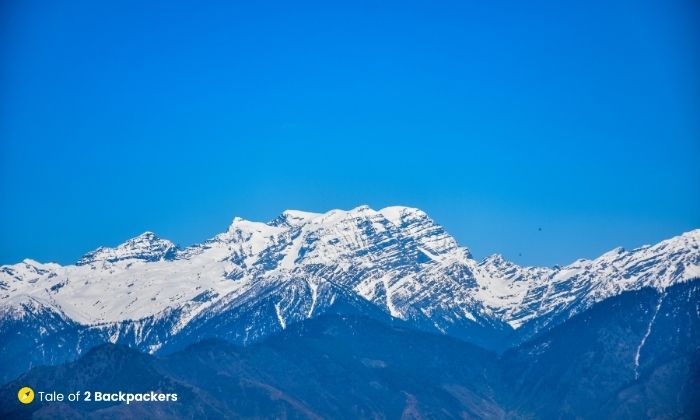

The place was so beautiful and serene. I just wanted to stay back there. When I told Agni and Aarif about my wish, Agni simply rolled his eyes and Aarif laughed. We spent some time there admiring the beauty of the vistas and then went on to visit the shrine of Baba Shukur-ud-din.
Shrine of Baba Shukur-ud-din
The shrine of Baba Shukur-ud-din is located on a hillock near Watlab. Infact, it was quite near the viewpoint where Aarif brought us. Baba Shukur-ud-din was one of the four disciples of Nund Rishi. He was a popular Sufi saint who provided proper ways of life to his disciples as well as believed to have performed miracles.
The shrine is located on the top of a hill and it was one of the most peaceful places we visited in Kashmir. There was a sense of serenity in the place. We visited the shrine and from there we got a view of the lake as well.

It was already afternoon and there were a few food shops outside. We had halwa and poori from there. This is quite a famous dish in Kashmir, albeit a breakfast one. So you can say we had a very very late breakfast!

We saw the Wular lake, visited the shrine and the day was well spent. As the day gradually went by, we returned back to Srinagar with loads of great memories and gorgeous photographs.
The Woes of Wular
Wular Lake is in trouble. Yes, it is under dire conditions because of human activities as well as the apathy of the government. The area of the lake has significantly reduced and so has the ecosystem.
One of the main reasons for the destruction of Wular Lake seems to be the willow plantations in the lake. Willow trees are used for making the famous Kashmiri willow cricket bats, firewood and timber. This was done to help the locals, however, its consequences were not considered at that time.

The willows helped in the making of cricket bats, but it gradually destroyed the Wular lake. The willow trees took a lot of water and their roots also captured the soil and thus lowered the water levels of the lake. It also did not help when the locals encroached the marshlands and the lake itself for agriculture and habitation. We saw the encroachments. Infact, Aarif also told us that the road beside the Wular lake on which we were driving was once a part of the lake itself! So you can imagine what human activities have done to the lake.
Added to it is the pollution. Industrial and residential effluents from the cities and the nearby villages are discharged into the lake. The problem does not stop here. The invasive weeds are spreading thereby destroying the beneficial vegetation growing in the lake.

The lake has already shrunk by 50% of its original size. One fifth of the water holding capacity of the lake has been lost over the last three decades due to siltation. If these problems are not addressed, then Wular will only be present in our textbooks.
What does is mean for the Valley?
And it will create a few environmental problems for Kashmir Valley as well. The Wular Lake is crucial to the water ecology of Kashmir Valley. The Wular basin serves as the main source of the Jhelum River. The lake acts as a sponge for four rivers and three other lakes in the valley. It also serves as the natural absorption area for the flood waters. As the depth of the lake is decreasing and the lateral flow of water is obstructed physically by farmlands, plantations and human habitations, the flood water can only flow back and cause devastations as seen in the floods of Srinagar in 2014 and then again in 2018.

The State Government though has few plans for the restoration of the Wular Lake. Since 2017, the Government has planned to remove almost 2.1 million willow trees and 20 million cubic metres of silt from the lake.
A few locals have also taken it upon themselves to educate the villagers to be more cognizant of their ecosystem. There are 42 villages and almost 9 lakh people living around the Wular Lake. The task is definitely not an easy one.

Coupled with the fact that Kashmir is a conflict zone, anything the locals want to do needs to be permitted by the army, navy, CRPF and local police along with the Water Conservation and Management Authority.
Well, we were happy to travel across Kashmir and see the beauty of Wular Lake and the other areas of the Valley. We literally felt we were in paradise. But we were also sad because of all the conflict surrounding the Valley. And amidst all these news of conflicts that take an upper hand, issues such as water conservation and environment gets a backseat. We can only hope for the best, just as Kashmir hopes for better time and peace.
To visit Wular Lake, you have to first reach Srinagar. From Srinagar, you can hire a car to visit Wular Lake.
If you are on a budget, then you can take a local bus to Sopore. From Sopore, you have to hire a car. Local transport in Kashmir is not very convenient. It is better to hire a car for the trip.
To be honest, when we looked on the internet, we did not find any places to stay around Wular Lake. But we did see a hotel near the lake. However, it was not accepting any guests at that time.
If you like this blog, please share it with your family, friends and neighbours. We also ask you to share this so that more people can know about the environmental degradation that Wular Lake is facing. These news gets buried in all the other news that Kashmir is so known for.
Pin it for a Later Read!



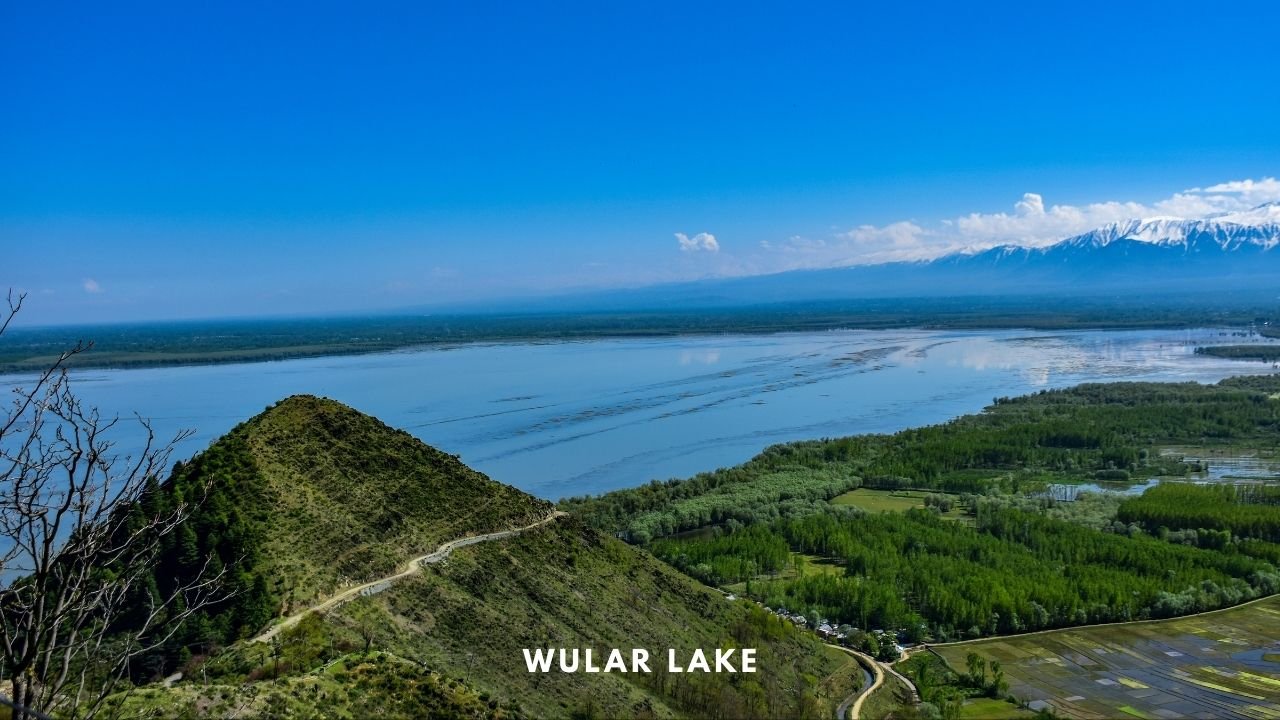

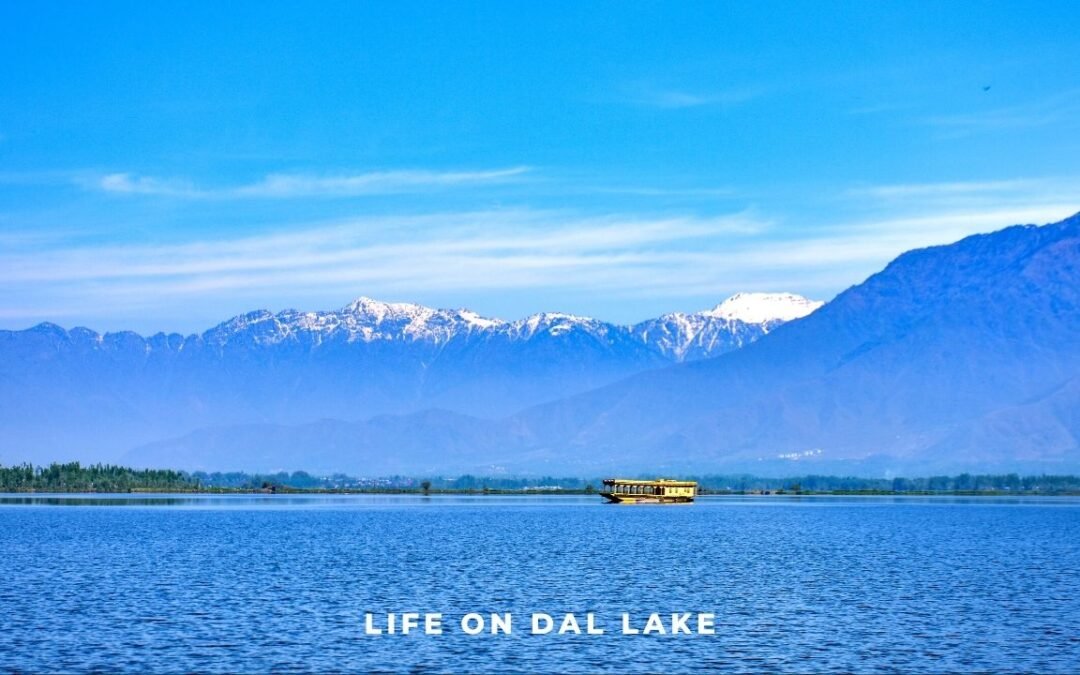
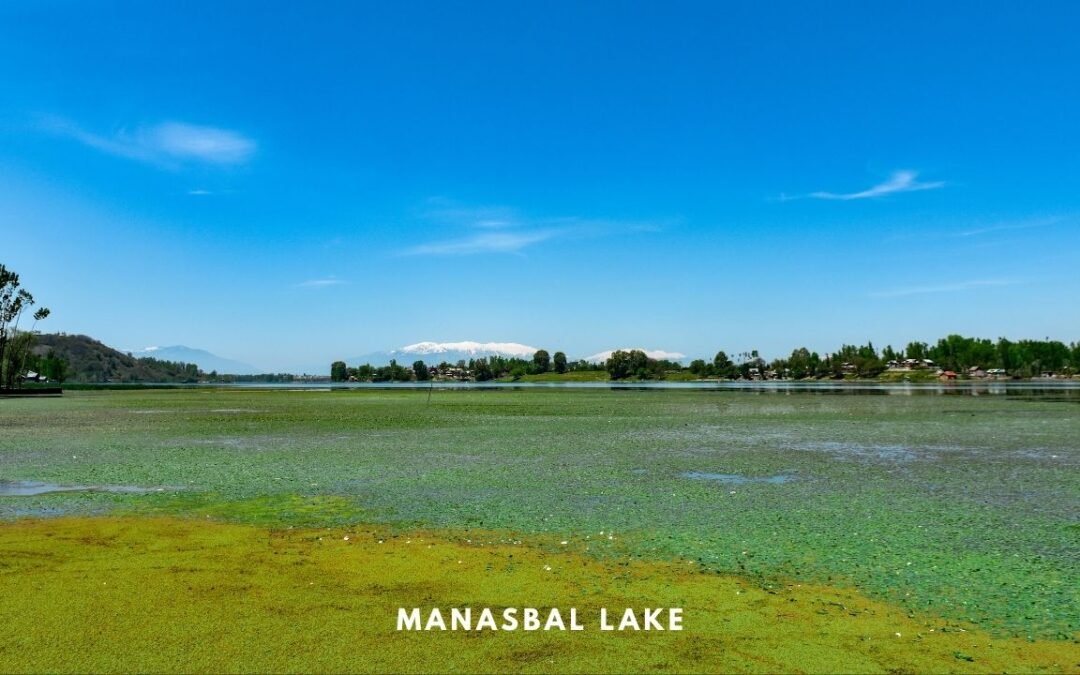
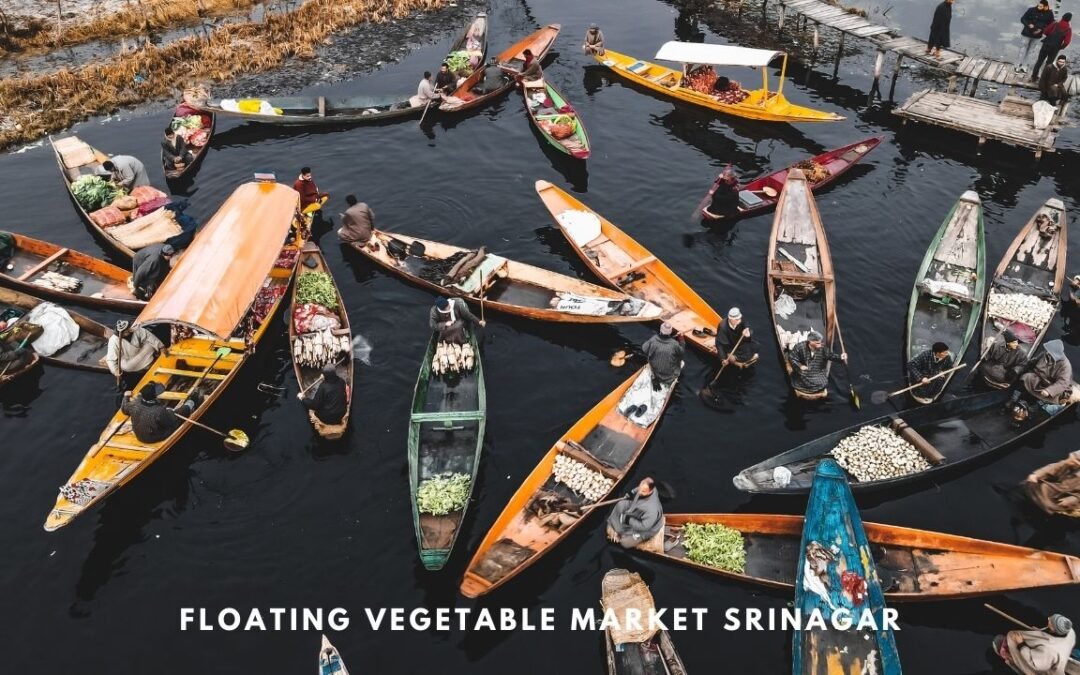
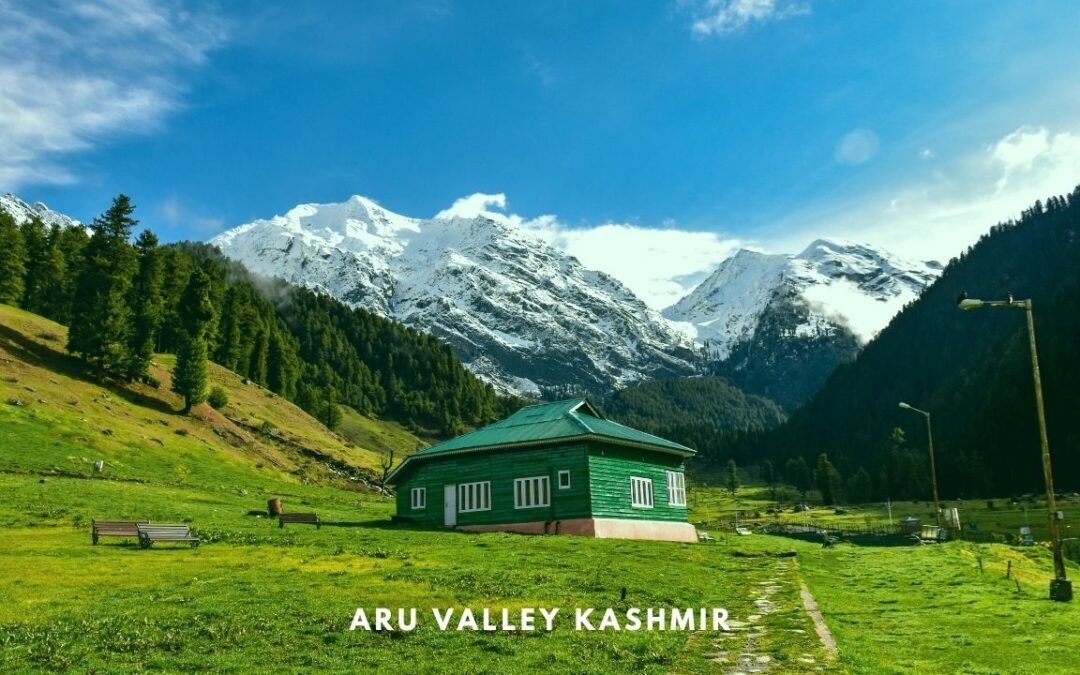
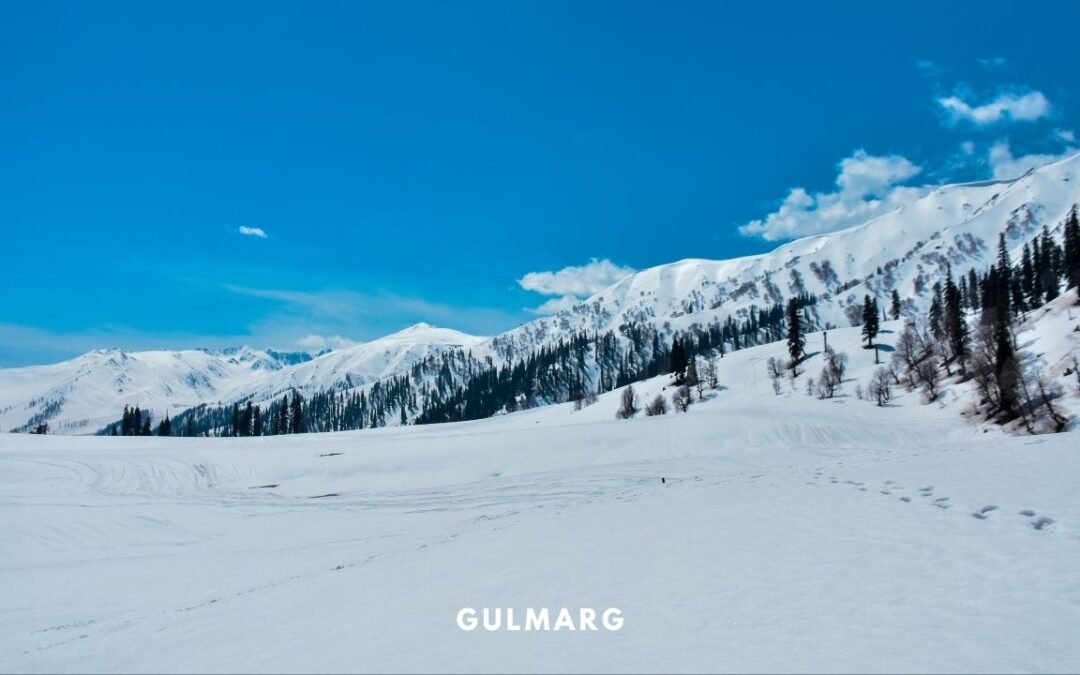
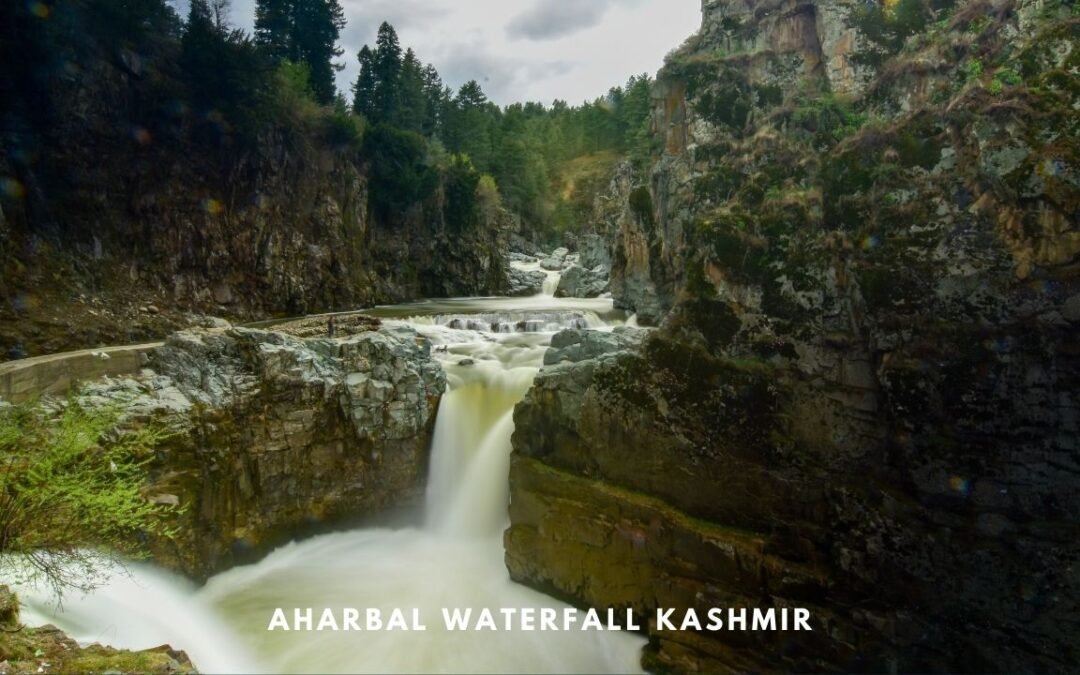
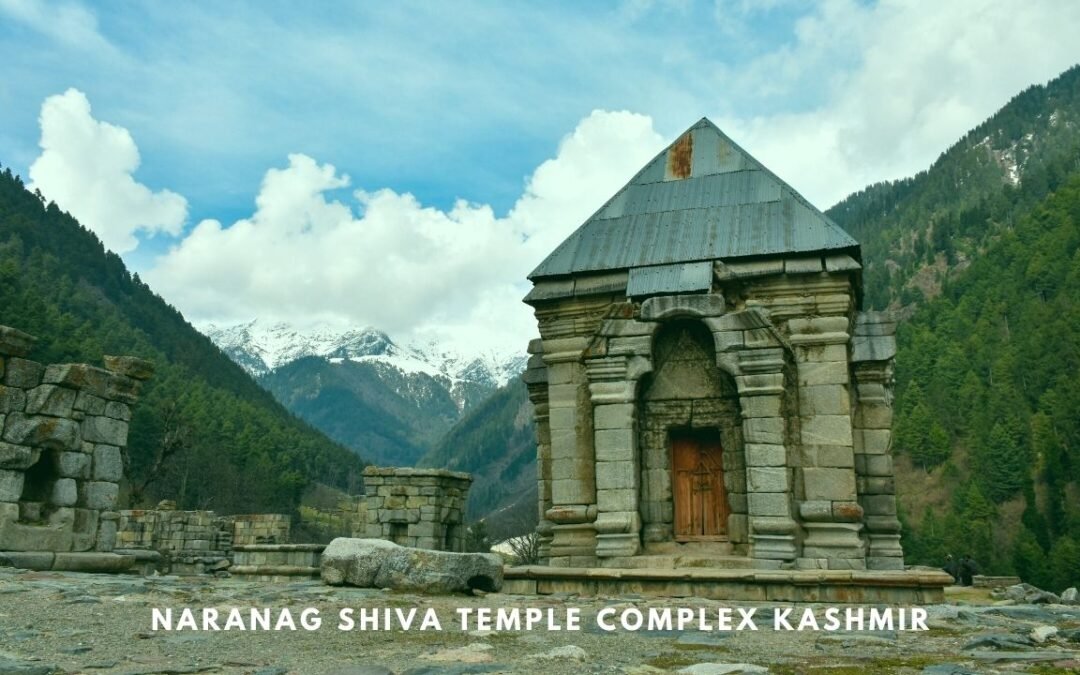
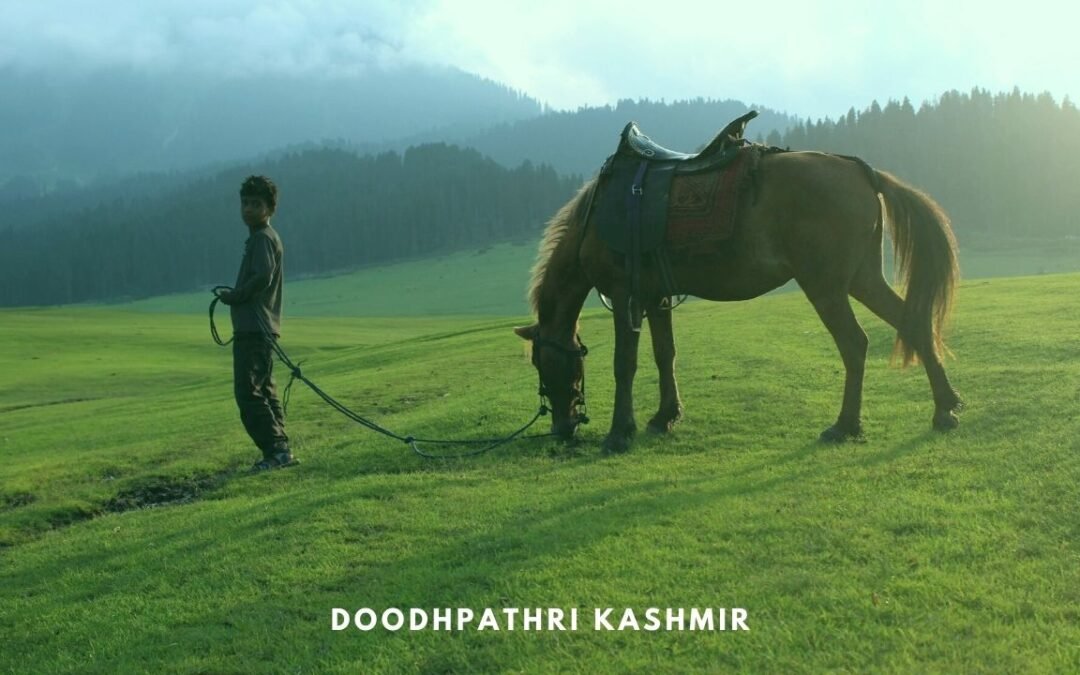
It’s so important to be kind to the earth and preserve places like this. It’s a shame that it’s reduced the size of the lake but has also impacted the wildlife. Thanks for bringing it to our attention! Looks like a lovely place to visit.
I only hope that the concerned people do the right by the Wular Lake. Thank you for the comment!
It was good that you got to visit the Wular Lake on your most recent visit. Always sad to read that freshwater lakes like this are shrinking in size. Lakes like this do play such a vital role in the local ecosystem. Awesome that you had a local friend who got you to such a great viewpoint of the lake.
It is always great to have a local friend to take you around. Makes things simpler. Thank you for the comment, Linda!
The mountains reflections on Wular Lake is gorgeous! It is sad pollution has created so many threats to the environment around the lake. It is always disappointing to arrive at a destination you have been wanting to visit and it is closed. You were so fortunate to have a friend to show you alternative, and those alternatives were beautiful!
Yes, we were indeed lucky to see Wular Lake in such a beautiful way. Thank you for the comment.
Such a beautiful place! I’m sorry to hear that the parks were closed but at least you got to go around the lake, and see a lot. I hope they are able to safe the Wular Lake as so many places seem to be ruined by peoples actions. I would hate to see it be gone.
In the hindsight, we think it was better that the parks were closed. Otherwise we would not have taken the trouble to go around the lake. Thank you for the comment!
I resonate with you. I also feel giddy and excited when I finally get to visit a place I’ve only read or learned about in class. It feels different when you’re there in the flesh. I haven’t heard about the Wular Lake until this post. It looks gorgeous from the photos! It even appears more fascinating when I got to know its purpose for migratory birds.
Thanks Trisha! It feels great to know that I am not the only one with such feelings! 🙂
Wular Lake looks like another piece of heaven. I did not know that it is the largest freshwater lake in India and the story behind the creation of the lake is so fascinating. I am surely adding this to my list when I am visiting Kashmir.
Wular is indeed a heaven. It is another wonderful place in Kashmir.
Such a scenic backdrop of the Wular lake. Didn’t know Kashmir had a fresh water lake. The place has lot of Leg like vibes.Nice post from ecological point of view.
Thank you so much!
Wow! Shrinking 50% from its original size was really huge! And I didn’t realize that there are more than 2 million willow trees around the lake. I hope the government will keep their plans to help save the Wular Lake. It’s sad, but you got to see the beautiful part of the lake from above with snowcap mountains in the background and a village in the foreground.
Yes, I hope the Government does something positive about the lake. Thank you for the comment.
Wow this spot is absolutely beautiful. I love the blue lake with the blue sky and mountains behind it. It’s sad that it’s not quite as big as it once was. I’m glad you talk about that aspect as well so people are aware.
Thank you Nina!
Thanx. I really speachless. Thank you again, for adding another day in my itinerary for Wular lake, (misti jaler hrod).
Thank you so much for the beautiful comment! Have a great trip in Kashmir.